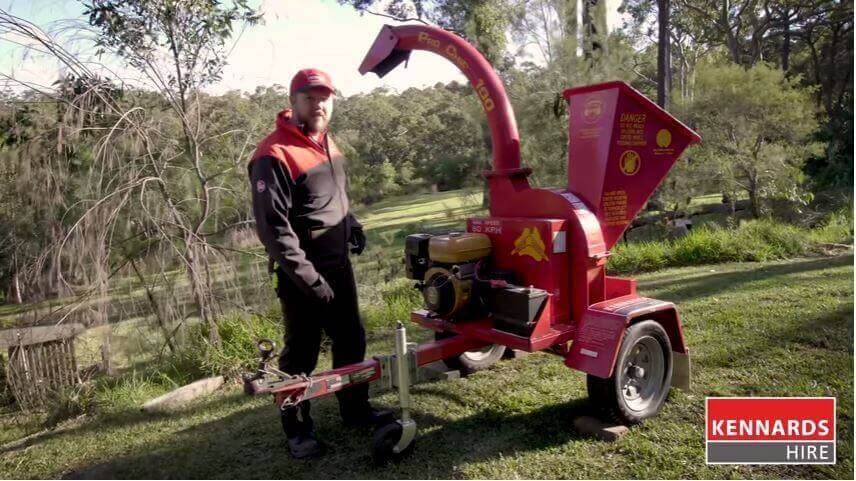How to Use a Chipper
How-To
Are you about to tackle a major gardening project that will leave you with piles and piles of branches and leaves? You'll need to dispose of these eventually, and without a skip bin or some way of transporting the material to the tip, it could take a lot of effort. That is, if you don't have a wood chipper.
You can use all of that otherwise useless debris for something very handy - you can turn it into mulch. Wood chips and leaves are a primary component of garden mulch, and if you're about to trim or lop a tree in your yard, why not recycle what you otherwise can't use? As branches and dead leaves, it seems like it's not much good to anyone or for anything, but it can provide excellent cover for your growing plant beds.
Why use a wood chipper?
Using a wood chipper in a climate like Australia or New Zealand can be particularly important to help keep your garden fresh. Harsh weather conditions all around each country create potentially unstable conditions for your soil. Mulch acts as a protective layer on the soil, helping to reduce heat transfer to or from the ground. Mulch also helps keep moisture trapped in the soil, meaning you may be able to water your plants less frequently, reducing your water bill.
There's no point going out to a garden store and buying bags of mulch if you have perfectly useful branches and leaves you can use already. The problem is turning those branches and leaves into suitable mulch, but that's where a wood chipper comes in handy.
While a chipper won't take dead and dry branches, palm fronds or vines, all of your leaves and freshly cut branches will be churned up and spat out the other end in useable form. Even if you produce far more mulch than you need, the end product will be much more manageable to throw into your green waste bin than if you left the branches whole. You could even bag it up and give it to your neighbours, friends or family to use in their gardens. Whatever your needs, mulching your tree lopping debris and using it in your garden is a great way of reusing materials you have on hand.
How to safely use a wood chipper
Safety is paramount – as any machine like a wood chipper can be dangerous if they're not properly set up and used correctly. If you're using a wood chipper around your property, make sure everyone in your household knows not to approach you or the machine while it is operating. The chute where the debris comes out should be directed away from windows, cars or anywhere people might walk (i.e. a footpath). Not everyone around you will be wearing full protective clothing and equipment, so if you blow the wood chips onto the road or a public pathway, you could cause serious injury. The protective clothing you should wear includes full-length shirt and pants, thick gloves, eye and ear protection, covered shoes, and a helmet.
In the safest position and with the wheels chocked, you can direct the chipper chute towards a wheelbarrow or an area you want to start a pile of mulch. A director flap will add more control to where the wood chips end up. If this is completely open, the chips will fly in a wide arc, but if it is in the 'down' position, it will spread in a concentrated area.
All wood chippers have a fuel-powered engine and therefore should only be used outside. To turn this on, open the fuel tap, push the throttle up so it is on a low speed setting, and press the ignition. Once running, you can change the speed of the engine depending on the type of wood chip you want to produce (a higher speed will mulch the branches and leaves more). Refill the fuel tank with the right fuel and always wait until the machine is off and the engine is cool before refuelling.
Slowly feed your branches into the feeder area thickest end first. The chipper will catch the branch and proceed to chip it up, sending out the chips through the shoot. Make sure you only feed through branches that are the right size according to the chipper you hire. Most chippers will have a size guide on the machine, letting you know what the maximum size branch is that you can put through the chipper.
Kennards Hire has the experience and know-how to help you use a wood chipper safely and effectively. For more information about why one of these machines would help your next DIY project, get in touch with your local branch today.


